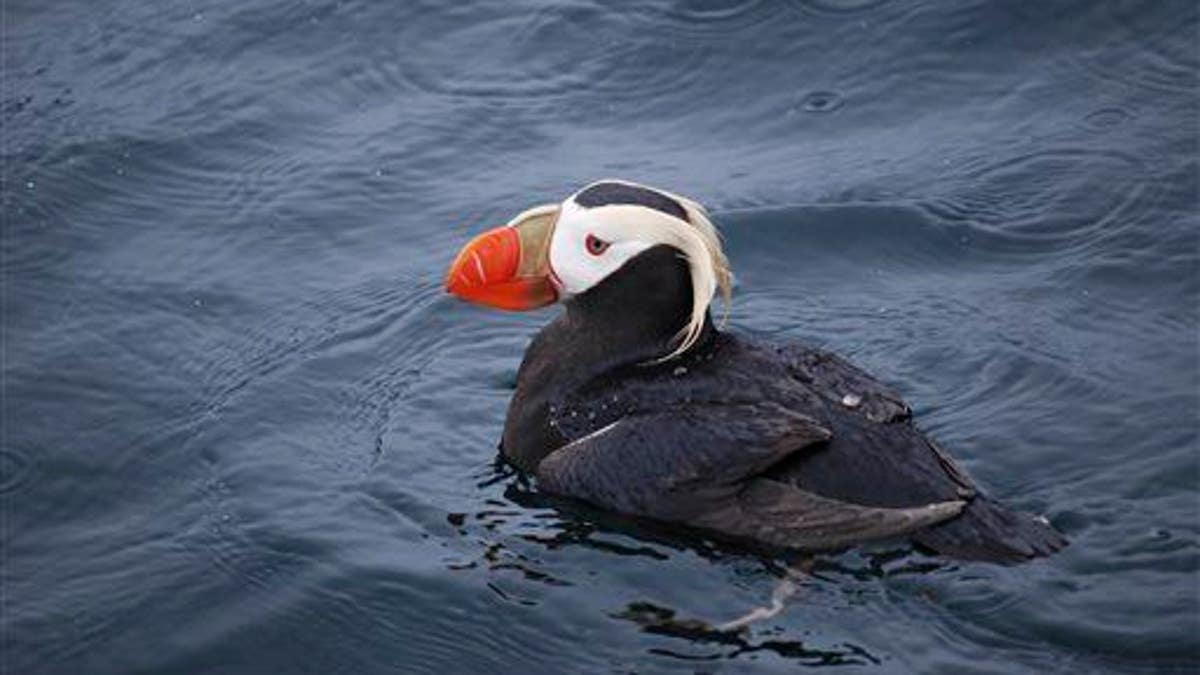
A tufted puffin in Alaska in 2012. (AP Photo/U.S. Fish and Wildlife Service, David Irons)
Dead puffins are washing up on the shores of an island in the Bering Sea at an alarming rate, National Geographic reports. "In 10 years of monitoring, we've only seen six puffins wash in—total," a professor who coordinates a West Coast volunteer bird-monitoring network says.
In just shy of three weeks, they've seen 250. Scientists believe the actual number of dead puffins is much higher, to the point that half the puffin population in the North Pacific may be dead.
The cause is no great mystery: The birds are simply starving to death. And scientists are concerned what that means for other animal populations in the Bering Sea, which provides a good chunk of North America's seafood, from crab to salmon to the pollock found in fish sticks.
More from Newser
The culprit appears to be water temperatures that were "off-the-charts warm" this year, according to NOAA ecologist Nata Mantua. Even the normally chill water found at the bottom of the Bering Sea was 6 degrees Celsius above normal.
The warm water not only killed off the fatty zooplankton fish rely on for food, but almost all zoo plankton; that hurt fish populations, which meant less food for mammals and birds.
In August, the Portland Press Herald reported on the woes plaguing the largest puffin colony in the Gulf of Maine. On Machias Seal Island, 60% of puffin nests that hold eggs produce viable chicks who ultimately enter the sea; this year it was 12%, and those who didn't starve to death were notably small.
Scientists theorize a warming gulf impacted the food supply there, too. (There's other drama happening at Machias Seal Island.)
This article originally appeared on Newser: Puffins Are Starving to Death in Incredible Numbers
